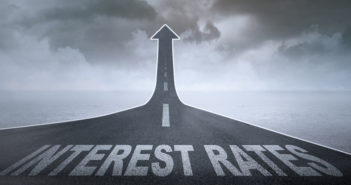- The Federal Reserve will raise rates on September 26th and will likely hint of another hike in December.
- The bigger question is if the Fed moves to a tight policy: interest rates exceeding inflation.
- The event is set to take over the full week and move all markets for quite some time.
September and December
The Federal Reserve will raise rates on September 26th. The probability is 100%. They have communicated it in a clear manner, as they did in the past. The economy is growing at a rapid clip, wage growth has recently accelerated, and inflation is on target despite the recent slide.
A rate hike in December is also high on the cards. The Fed’s recent dot-plot forecast the fourth hike in 2018, and there is little reason to doubt the move. Markets will want to see a confirmation of the Fed’s intentions.
From accommodative to tight
The bigger question is the direction of monetary policy in the future. During the post-crisis years, the policy has been accommodative: interest rates were below the inflation rate. With the Federal Funds Rate topping 2%, the policy is now neutral.
Some Fed officials want a neutral rate, matching inflation. However, Fed Governor Lael Brainard and Chicago Fed President Charles Evans hinted at setting the rate above neutral: a tight monetary policy, at least for some time. Both of them used to be doves. Are the hawks taking over? Does the Fed want tight policy?
The answer to this question, as seen in the dot-plot, will determine the movement of the US Dollar. If the Fed wants rates to exceed inflation, the greenback will jump on the dot-plot alone.
An upgrade of the interest rate forecasts for 2019 and 2020 while inflation forecasts remain subdued will mean a tight monetary policy.
To sum it up:
- If the interest dots are close to the inflation dots, it means loose monetary policy. Dense dots are therefore a downer for the dollar.
- If the gap between higher interest rates and lower inflation is significant, it means tight monetary policy and the Dollar could dominate.
Other factors to watch
The fresh dot-plot may provide some answers and will likely trigger the initial market reaction. The other forecasts in the document relate to growth, inflation, and employment. will be of lesser importance.
The regular statement that the FOMC publishes will be scrutinized first and foremost for any new commentary on inflation. Fed Chair Jerome Powell said that inflation is not accelerating in his Jackson Hole speech. What are the views now? Comments on wages after their recent acceleration are also of interest ahead of insights on employment and global developments.
After the initial rush related to the dot-plot and the statement, markets will have 30 minutes until Chair Powell begins his press conference. Powell has tiptoed around sensitive political questions such as trade, but he is indeed not shy about monetary policy. He can trigger another round of volatility in his 45-50 minutes long presser.
Further reactions to this substantial rate decision are due at the Tokyo open, on Thursday’s European open and most probably later in the week.
More: Trump’s tariffs: 5 reasons why markets ignored them and how that could change
Get the 5 most predictable currency pairs
